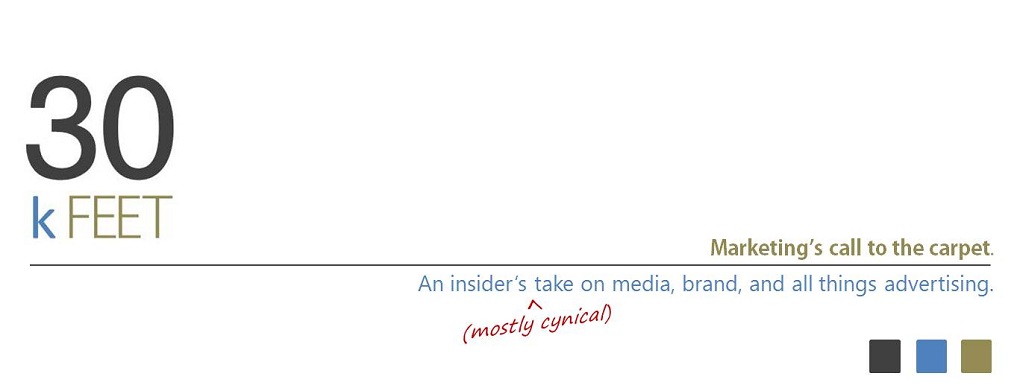I’ve been thinking a lot about the evolution of social media as a method for brand communication. Specifically, how it should react in the event of a PR nightmare.
While more traditional advertising channels are rigid – TV/radio pre-recorded, print/billboard, pre-printed and placed – digital can be real-time and responsive.
And with that, comes the HUGE responsibility to do so.
Social can’t be all carefully crafted and canned like its traditional channel counterparts. Its fundamental premise begs of users to be quick-witted and casual, to provide an on-going, authentic dialogue that takes into account real-time global news and perceptions on brand.
Case in Point: Malaysia Airlines.
As a recent example, let’s consider how Malaysia Airlines (MAS) used social media before, during, and after the loss of MA370.
Before MA370 ever left Kuala Lumpur
Finding a new voice while trying to find a plane
A quick change in altitude. When Beijing-bound Flight 370
vanished without a trace on March 8th, the airline’s social media
profiles immediately swapped full-color logos and image-rich cover photos for
solid bands of gray. The feel-good stories ceased with a clear, deliberate
shift in intention from promotion to that of reporting facts and clarifying
rumor.
Returning to protocol post tragedy (the tricky part)
Mayday-mayday!! MA370 is (still) a HUGE global story of human
interest! 239 people are missing without a trace and presumed dead. What’s
Malaysia Air doing? Asking its twitter audience to choose between a sunrise and
sunset.
 |
| Wait. Those aren’t the same waters you lost a plane in earlier this year, right? |
They’re also trying to launch and promote hashtags like
#MHJourney and #MHMoments (where ‘MH’ is
their IATA airline designator). What current ‘journey’ or ‘moment’ with MAS
does NOT remind you of the missing jetliner?
Here’s a smattering of recent posts. You don’t have to be a professional comic to come up with dark, clever retorts to any one of these:
Here’s a smattering of recent posts. You don’t have to be a professional comic to come up with dark, clever retorts to any one of these:
I’m
glad SOMEONE had a smooth landing! #whereisMAS370
What QUESTIONS do you think #MA370 passengers should have thought to ask?! #BESTjourney How about the South Indian Ocean? “Memorable experiences” flying #MAS, that’s for sure!
What QUESTIONS do you think #MA370 passengers should have thought to ask?! #BESTjourney How about the South Indian Ocean? “Memorable experiences” flying #MAS, that’s for sure!
Look, I’m a stone-cold Marketer.
I get why MAS would want to put this tragedy behind them and get back to the glamorous world of shameless self-promotion.
At first glance, it’s just disrespectful and in poor taste.
But beyond that, it’s also confusing. You want to ask, was marketing not clued in!? Do they not know MAS lost a member of its fleet a few months ago!?
It’s just naïve to be so brazen with the promotions in the face of a very recent, very clear product fail.
There are no definite rules here.
No algorithms to follow, plotting size of tragedy with length of marketing moratorium. We’re all learning as we go, praying we never have to make the call ourselves.
Still, here are a few down-and-dirty suggestions to start.
Draw a Clear Line
Communicate your intention to shift gears before you actually do it.
No one likes a blind-side. Hire a passionate writer to craft a rich letter or produce a heart-felt YouTube video and broadcast a final apology. One that honors the past, owns fault, and recommits to your roots with a promise to survive and thrive. Don’t forget to test for goose bumps.
Start Small
Before you decide to flip back on the promotional power grid, maybe consider first a feel around in the dark? Listen to social media. What’s the buzz and prevailing sentiment regarding your brand?
If it’s still hot with rage, delay.
And Build
When you finally do return to your “regularly scheduled program,” cut the frequency and soften the tone. Social media is rich with human emotion and your brand voice should come across the same; moving on but irrevocably changed by the event.
And whatever you do,
Don’t pitch softballs
to all those cynical twitter super users and haters!!
Challenge every tweet. Comb through those 140 characters again and again, pressure testing for even the slightest chance someone might misconstrue intention or grab hold of a double-entendre and run with it at your expense. People love to kick ya when you’re down. It’s a pandemic and everyone wants their jab to go viral.
Social media in the face of brand implosion.
Can you think of any
other examples of the good, the bad, or the ugly?
Have a great long weekend, everyone. :)
-DS


